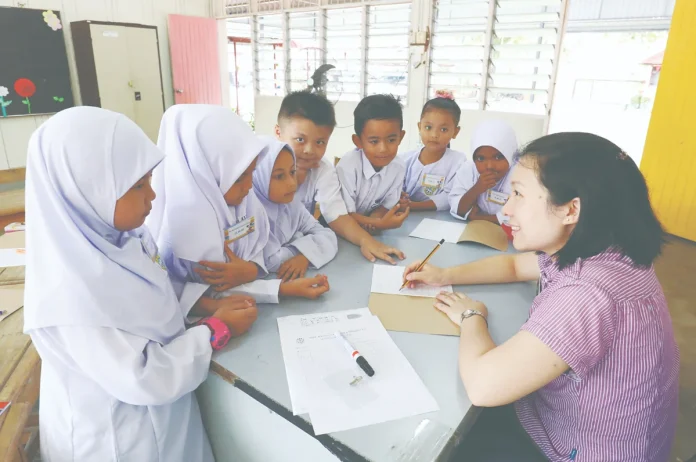Malaysian students benefit from multilingual education, mastering Bahasa Melayu, English, Mandarin and Tamil for unity, opportunity and cultural heritage.
EVERY morning, when the school bell rings across Malaysia, classrooms come alive with a chorus of voices – some greeting each other with “Selamat pagi”, others with “Good morning” or “Vanakkam” and “Zao Shang Hao”. This is the sound of Malaysia’s greatest strength – our diversity in harmony.
In our schools, whether national or vernacular, we are given a rare and precious gift: the chance to learn and grow in more than one language.
For many students, this means mastering not just two but three languages – Bahasa Melayu, English and either Mandarin or Tamil.
ALSO READ: Johari Abdul calls for Malaysianisation of diverse cultural heritage
It’s a system that doesn’t just teach us to communicate; it also teaches us to understand, connect and belong.
Each of our national languages plays a unique and powerful role in shaping who we are. Bahasa Melayu is the language of unity – the golden thread that ties together Malaysians of every race, culture and belief. It’s the language we use to sing Negaraku, to celebrate our independence and to express our shared identity as one nation.
When we speak Bahasa Melayu, we remind ourselves that we are part of something bigger – a Malaysia that is diverse yet united.
English is the language of opportunity. It opens doors to higher education, global communication and international success. Through English, Malaysian students can access the world’s best ideas – from science to literature and from technology to art. But English is more than a school subject; it’s a bridge to the wider world, allowing us to dream, compete and collaborate on a global stage.
ALSO READ: Bahasa Melayu mastery must remain priority before foreign languages
Mandarin, Tamil and other mother tongues are the languages of heritage. They carry the wisdom of our ancestors, the rhythm of our traditions and the beauty of our stories. When we speak our mothertongue, we keep our roots alive. It connects us to our families, communities and our cultural pride, reminding us where we come from as we move towards the future.
Being multilingual isn’t only about knowing more words; it’s about seeing the world through more than one lens.
When you learn a new science term in English and then explain it to your friend in Bahasa Melayu or Mandarin, you are not just translating; you are also deepening your understanding. You are training your brain to connect ideas in creative ways.
This is the secret advantage of bilingual and trilingual students: they think differently. Studies show that multilingual learners are often better at problem-solving, multitasking and creative thinking. The mental flexibility that comes from juggling languages also makes it easier to learn new skills later in life.
In a world that is changing faster than ever, being able to think in multiple languages is not just impressive; it is essential. Languages are living things; they grow only when you use them. Memorising grammar rules isn’t enough; the real magic happens when you speak, read, listen and write every day.
Here is how you can make the most of your multilingual journey:
- Speak boldly: Don’t be afraid to mix languages in your conversations; it’s a natural part of learning. Just remember to switch to formal language in essays and presentations.
- Read widely: Explore books, articles and stories in different languages. Read a novel in English, a poem in Bahasa and a comic in Mandarin or Tamil. Every story adds something new to your thinking.
- Write creatively: Keep a language journal. Try writing your daily reflections in a different language each time. This helps improve your efficiency in the languages.
Together, these languages don’t divide us; they define us. They make Malaysia not just multilingual but also multicultural, multitalented and multifaceted.
Liong Kam Chong
Seremban








